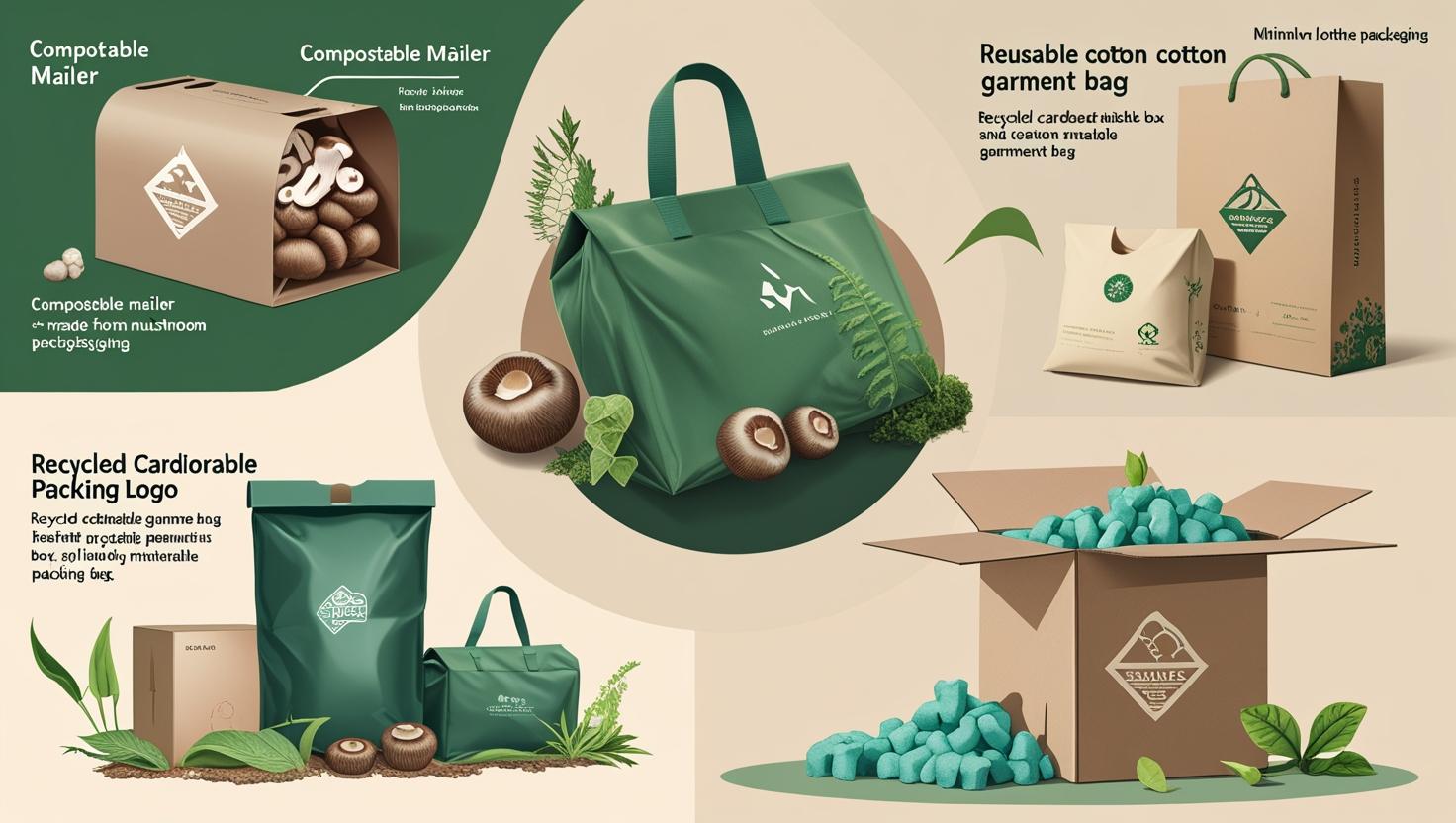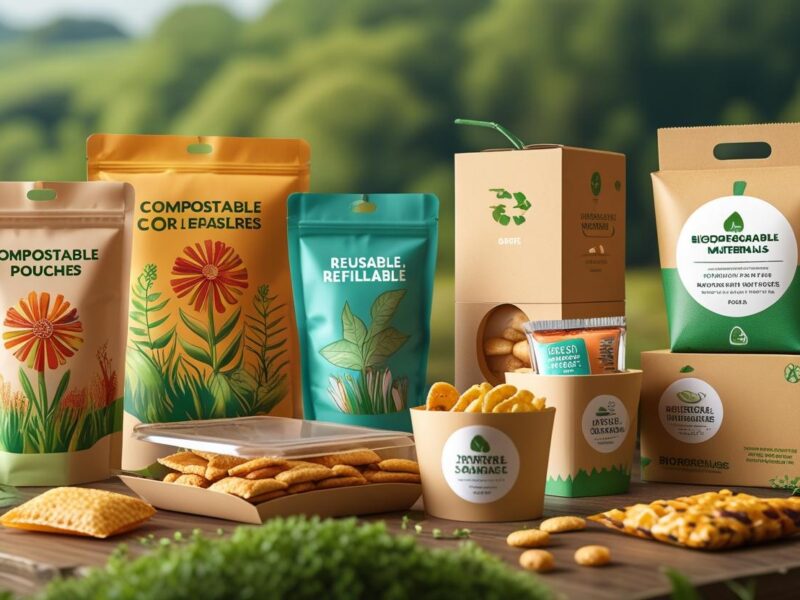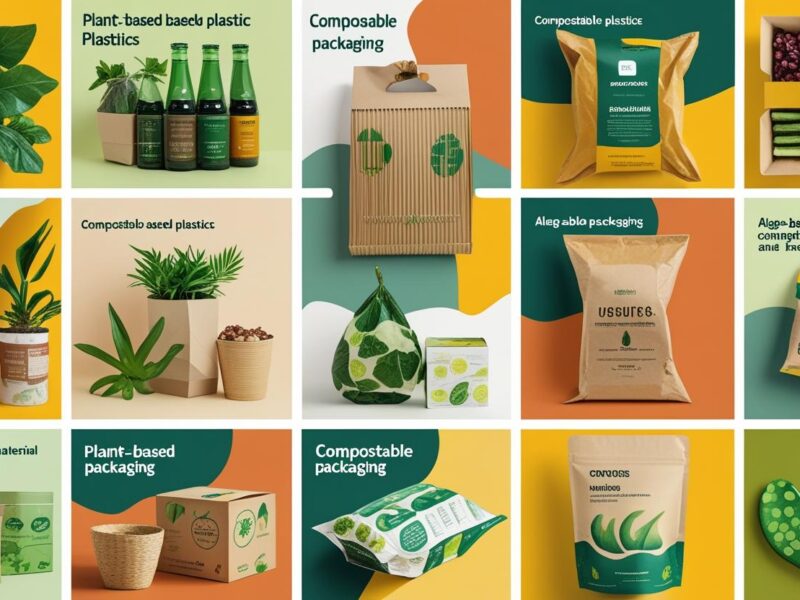Explore sustainable packaging solutions for clothing that help brands reduce waste, enhance customer experience, and protect the environment.
The Need for Sustainable Packaging in Fashion
In recent years, the fashion industry has faced increasing pressure to reduce its environmental footprint. Sustainable fashion, once a niche concept, is now at the forefront of the global conversation. While brands focus on creating eco-friendly clothing, a crucial aspect often overlooked is the packaging. Packaging for clothing can account for a significant amount of waste, contributing to landfill overflow and environmental pollution. However, sustainable packaging for clothing is rapidly gaining traction as an eco-friendly alternative that not only benefits the planet but also boosts brand credibility and consumer trust.
This article will delve into the concept of sustainable packaging for clothing, the types of materials used, its benefits, and how businesses and consumers can contribute to this much-needed change.

What is Sustainable Packaging for Clothing?
Sustainable packaging refers to the use of materials and designs that have a minimal impact on the environment. In the context of clothing, sustainable packaging focuses on reducing waste, improving recyclability, and using renewable resources. It encompasses a wide range of solutions, from biodegradable plastics to reusable garment bags, all aimed at decreasing the fashion industry’s environmental footprint.
Unlike traditional packaging, which often involves excessive use of non-recyclable plastics and harmful chemicals, sustainable packaging emphasizes eco-friendly, functional, and stylish options that serve both the consumer and the planet.
The Environmental Impact of Traditional Packaging
Traditional clothing packaging is a significant contributor to pollution. According to the Environmental Protection Agency (EPA), packaging materials like plastic bags, polybags, and hangers used in the fashion industry take hundreds of years to decompose. These materials end up in landfills or oceans, harming wildlife and contributing to the growing global waste crisis.
- Plastic pollution: A vast amount of clothing packaging is made from polyethylene, a type of plastic that is difficult to recycle.
- Excessive waste: Many clothing items are wrapped in layers of plastic that have no real purpose other than aesthetic appeal, leading to over-packaging.
- Energy and resources: Manufacturing conventional packaging materials consumes large amounts of energy and raw materials, further depleting the planet’s resources.
By adopting sustainable packaging, the fashion industry can mitigate these environmental issues and reduce its carbon footprint.

Why Sustainable Packaging is Crucial for the Fashion Industry
Sustainable packaging is more than just a trend; it’s a necessity for the future of fashion. As consumers become increasingly eco-conscious, they are demanding more sustainable practices from the brands they support. Fashion companies that embrace sustainable packaging are positioning themselves as leaders in a greener, more responsible industry. Here’s why sustainable packaging is essential:
- Reducing Environmental Impact: It minimizes waste, lowers carbon emissions, and conserves resources, helping mitigate the effects of climate change.
- Regulatory Compliance: Governments and organizations are introducing regulations to limit plastic waste. Brands adopting eco-friendly packaging early are ahead of the curve in terms of compliance.
- Meeting Consumer Demand: Today’s consumers prefer sustainable products, and packaging is no exception. Companies with eco-friendly packaging are seen as more trustworthy and socially responsible, attracting a loyal customer base.
Types of Sustainable Packaging for Clothing
There are several types of sustainable packaging options available for the clothing industry. These options are not only environmentally friendly but also align with the growing consumer demand for ethical production.
Biodegradable and Compostable Materials
Biodegradable packaging materials decompose naturally over time, leaving behind no toxic residue. Materials like plant-based plastics, such as PLA (polylactic acid), and biodegradable films are perfect for packaging clothing without causing long-term harm to the environment. Compostable packaging, which breaks down into nutrient-rich compost, is an even more sustainable alternative to conventional plastics.
Recycled and Recyclable Packaging
Recycled materials, such as recycled cardboard, paper, and plastic, are widely used for packaging clothing. These materials are collected from post-consumer waste, reducing the need for virgin resources. Recyclable packaging ensures that the product can be reused or repurposed after its initial use. This option is often considered the most cost-effective choice for businesses seeking sustainable packaging.
Minimalist Packaging Designs
One way to make packaging more sustainable is by reducing the amount of material used. Brands that use minimalist packaging focus on the essentials, eliminating excess plastic or paper. This not only reduces the overall waste produced but also creates a unique, aesthetically pleasing design that appeals to eco-conscious consumers.

How Sustainable Packaging Benefits Clothing Brands
Adopting sustainable packaging offers numerous benefits for clothing brands beyond environmental impact.
Cost-Efficiency in the Long Term
While the initial investment in sustainable packaging may be higher, it can save money in the long run. Reduced packaging size, for example, lowers shipping costs and storage fees. In addition, eco-friendly packaging materials often come from recycled sources, which can be less expensive than producing new packaging from scratch.
Enhanced Brand Image and Consumer Loyalty
Brands that embrace sustainable packaging are seen as forward-thinking and responsible. This enhances their reputation, builds trust with consumers, and fosters loyalty. In an era where consumers are more mindful of their purchasing decisions, clothing brands that take steps toward sustainability are likely to gain an edge over their competitors.
Challenges in Adopting Sustainable Packaging
Despite its benefits, the transition to sustainable packaging for clothing does come with challenges.
- Cost Concerns: Many eco-friendly packaging materials are more expensive than conventional alternatives.
- Supply Chain Limitations: Sourcing sustainable materials can be difficult, especially for smaller businesses without access to large-scale suppliers.
- Consumer Education: Some consumers may not understand the importance of sustainable packaging or may not know how to dispose of it correctly.
To overcome these challenges, companies need to invest in educating both their staff and customers about the benefits of sustainable packaging.

Innovations in Sustainable Packaging
The clothing industry is constantly evolving, and with that comes new, innovative sustainable packaging solutions. Here are some of the most exciting trends:
Water-Soluble Packaging
Water-soluble packaging is an emerging innovation that dissolves in water, leaving behind no waste. This type of packaging is ideal for small clothing items, such as accessories or socks.
Mushroom-Based Packaging
Made from agricultural waste and mushroom roots, this biodegradable packaging option is both strong and sustainable. It can be composted or broken down into natural elements, making it a great alternative to plastic.
Edible Packaging for Clothing
While still in its early stages, edible packaging is being developed for food and clothing. Made from natural ingredients, this type of packaging can be consumed or composted, reducing waste even further.
How Consumers Can Support Sustainable Packaging Initiatives
Consumers play a vital role in encouraging brands to adopt sustainable packaging practices. Here are a few ways to support this initiative:
- Choose brands with sustainable packaging: Look for certifications or labels indicating eco-friendly packaging.
- Recycle properly: Ensure you dispose of packaging in the correct way, whether it’s composting, recycling, or reusing.
- Spread awareness: Share information about sustainable packaging with others to increase awareness and encourage positive change.
Moving Towards a Sustainable Fashion Future
The future of fashion lies in sustainability, and packaging is a crucial part of this transformation. As the industry shifts towards more eco-friendly practices, sustainable packaging for clothing offers a powerful solution to the environmental challenges we face. By embracing innovative packaging solutions, clothing brands can reduce their carbon footprint, build stronger relationships with consumers, and lead the way toward a more sustainable future.
As consumers, it’s essential to support brands that prioritize sustainable packaging and actively seek out alternatives that reduce waste. The collective effort of businesses and consumers will make a significant difference in the fight against climate change, shaping a greener, more responsible fashion industry for future generations.
FAQs
What is the most eco-friendly packaging for clothing?
The most eco-friendly packaging options include biodegradable materials, recycled packaging, and minimalist designs that reduce waste.
Why is sustainable packaging important for fashion brands?
Sustainable packaging helps reduce the environmental impact of the fashion industry, improves brand reputation, and meets growing consumer demand for eco-friendly practices.
Can recycled packaging be used for clothing?
Yes, recycled materials such as paper, cardboard, and plastics are commonly used for clothing packaging and can be recycled again after use.
What are the challenges of using sustainable packaging?
Challenges include higher initial costs, supply chain limitations, and the need for consumer education on proper disposal methods.
How can consumers contribute to sustainable packaging?
Consumers can support sustainable packaging by choosing eco-friendly brands, properly recycling packaging, and spreading awareness about its importance.


